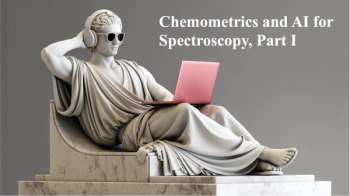
- Application Notebook-02-01-2015
- Volume 0
- Issue 0
Single Reaction Chamber Microwave Digestion for Pharmaceutical Samples in Accordance with USP Chapters and
Single reaction chamber microwave digestion offers significant benefits over traditional microwave digestion for pharmaceutical samples: higher sample throughput, reduced labor and consumables costs, simplified workflow, and superior digestion quality.
Single reaction chamber microwave digestion offers significant benefits over traditional microwave digestion for pharmaceutical samples: higher sample throughput, reduced labor and consumables costs, simplified workflow, and superior digestion quality.
The United States Pharmacopeia (USP) is in the process of developing new USP chapters <232> and <233> for the measurement of inorganic contaminants in pharmaceutical samples. While samples can be dissolved in aqueous or organic solvents, the large majority will require digestion, and closed vessel microwave digestion is stipulated by USP. Single reaction chamber (SRC) microwave digestion is a new type of closed vessel digestion that was developed by Milestone and offers many advantages over closed vessel digestion - particularly for pharmaceutical sample types.
Instrumentation
The Milestone UltraWAVE can digest up to 15 samples simultaneously, at up to 300 °C and 199 bar pressure. The high temperature and pressure capabilities enable the complete digestion of virtually every sample type. Samples are weighed into vials and placed in the chamber: any combination of sample types can be digested together - greatly simplifying the sample prep workflow. Raw materials, excipients, API, and final product can all be digested together in the same run. The Milestone UltraWAVE uses disposable glass vials, eliminating vessel assembly/disassembly and vessel cleaning, which significantly reduces labor and consumables costs. Most pharmaceutical sample types have high organic content, including oils and fats which are difficult to digest and generate CO2, which increases pressure in the reaction vessel. The high pressure capability of the UltraWAVE enables it to digest entire fish oil gelcaps - not possible with traditional closed vessel microwave.
The UltraWAVE can digest samples in as little as 3 mL acid, which minimizes reagent blank levels - important since ICP-MS will be used predominantly for USP <232> and <233> when implemented.
Table I: St. John's wort
The SRC chamber is pre-pressurized with N2 prior to the start of the run. This prevents sample boiling, eliminating cross-contamination and loss of volatiles.
Table II: Fish oil gelcaps
Due to the UltraWAVE's higher sample capacity, use of disposable vials, and faster cool down time, sample throughput is 2–3× higher than closed vessel digestion. Its lower consumables costs, simple operation and superior digestion quality also make the Milestone UltraWAVE the perfect choice for pharmaceutical sample prep.
Table III: Quality control summary (fish oil gelcaps)
Results
The data above shows excellent DLs and recovery - even for the volatile element mercury - no cross-contamination with the UltraWAVE.
Milestone, Inc.
25 Controls Drive, Shelton, CT 06484
tel. (866) 995-5100, fax (203) 925-4241
Website:
Articles in this issue
almost 11 years ago
Moxtek’s ULTRA-LITE X-ray Sourcealmost 11 years ago
Analysis of Yeast Fermentation Using Multiple Reflection Diamond FT–IR ATRalmost 11 years ago
Correlative Raman-SEM Microscopy (RISE Microscopy) in Life Sciencesalmost 11 years ago
Failure Analysis of Packaging Materialsalmost 11 years ago
Monitoring the Drying Process of Pressure-Sensitive Adhesivesalmost 11 years ago
Relative Irradiance of Decorative Incandescent and LED Lightsalmost 11 years ago
Vol 30 No 2 Spectroscopy February 2015 Application Notebook PDFNewsletter
Get essential updates on the latest spectroscopy technologies, regulatory standards, and best practices—subscribe today to Spectroscopy.





